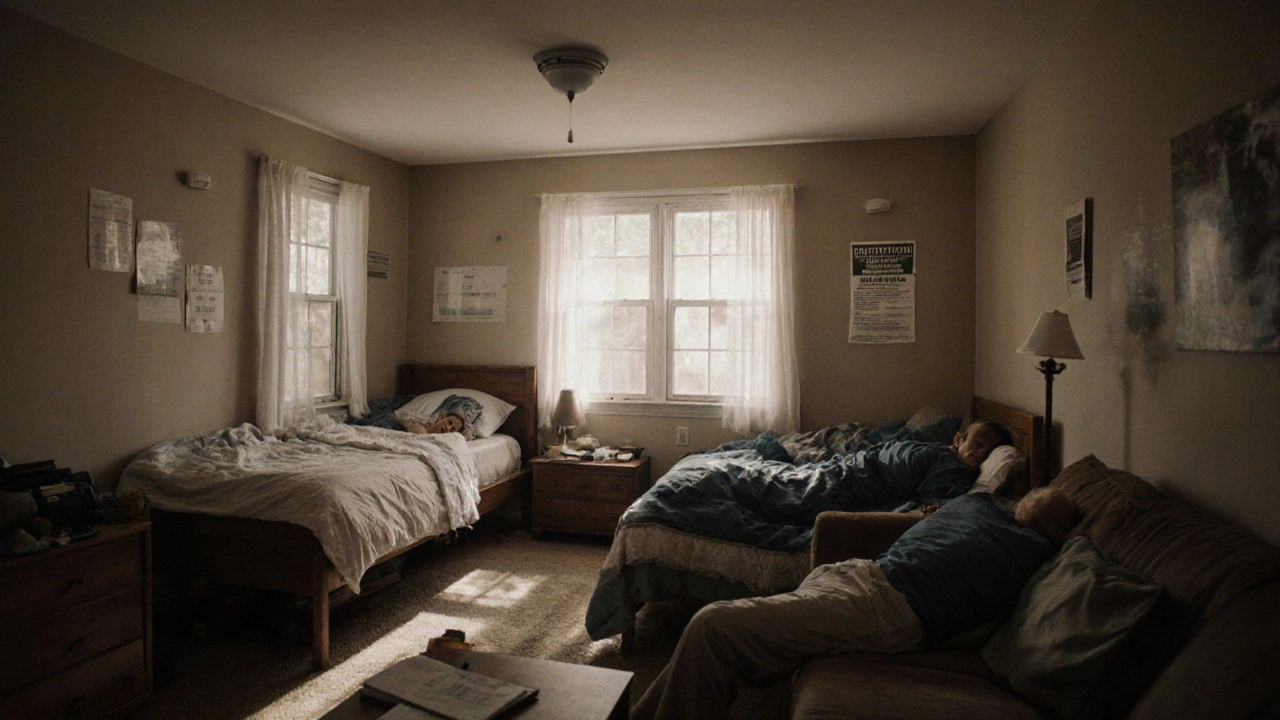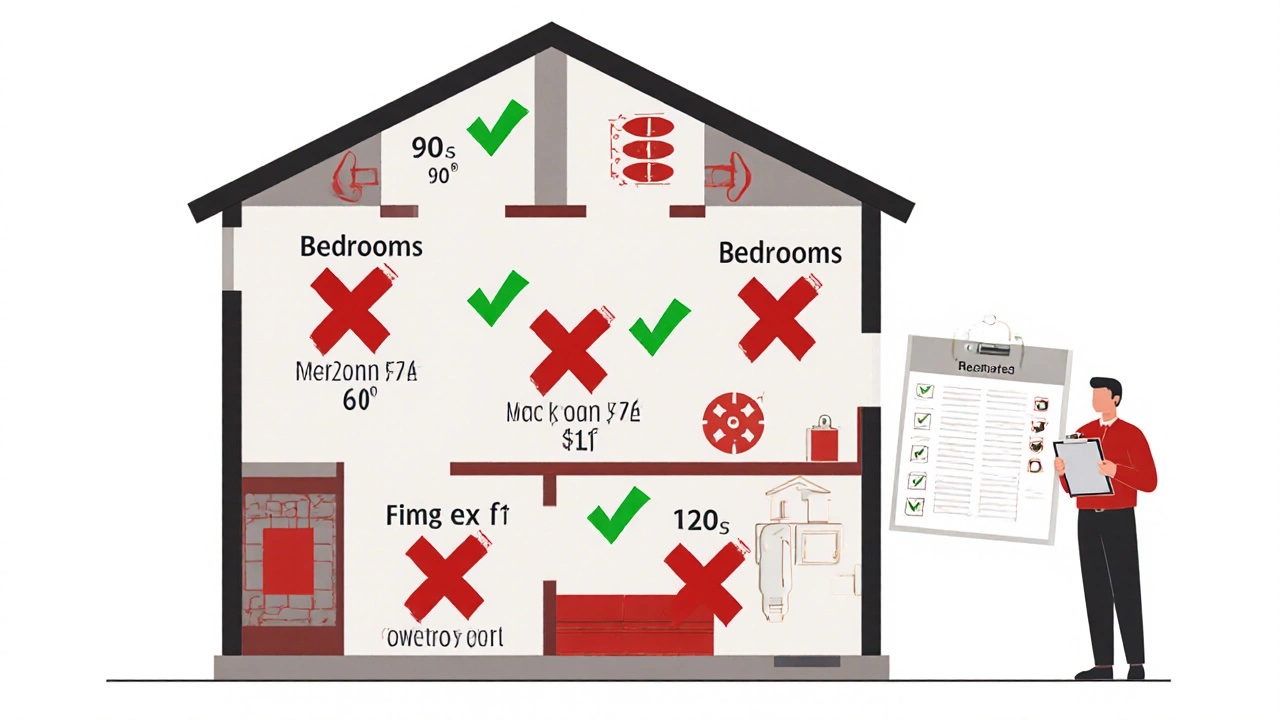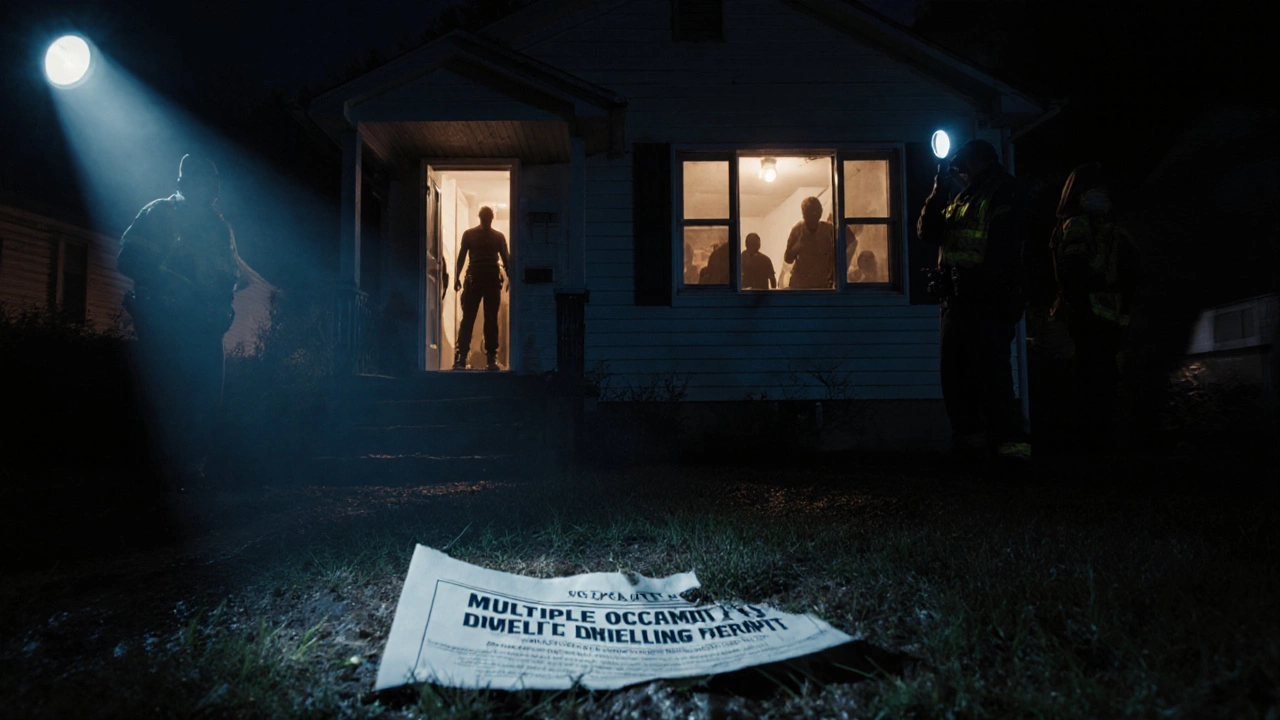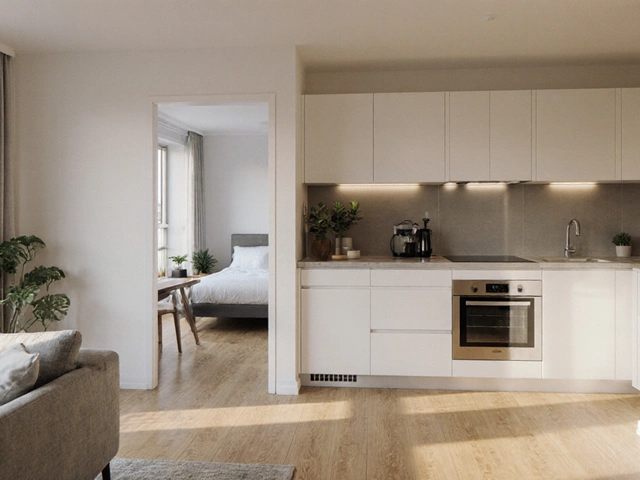How Many People Can Rent a House in Baltimore County?

Baltimore County Rental Occupancy Calculator
Calculate the maximum number of people you can legally rent to in your Baltimore County property based on building codes and registration requirements. This tool follows Baltimore County's International Residential Code (IRC) standards.
Enter Bedroom Sizes
Enter the square footage of each bedroom (minimum 70 sq ft per person).
Results
Maximum Occupants: 0
Registration Required: No
Breakdown:
Based on Baltimore County's International Residential Code (IRC) requirements: 70 sq ft per person in bedrooms. A room must be at least 120 sq ft to accommodate two people.
There’s no fixed number like "five people" or "eight people" that tells you exactly how many renters can live in a house in Baltimore County. Instead, the limit comes down to local building codes, fire safety rules, and how the property is registered with the county. If you’re thinking about renting out your house-or moving into one-you need to know what the rules actually say, not what someone guessed online.
It’s About Square Footage, Not Headcount
Baltimore County follows the International Residential Code (IRC), which sets minimum space requirements per person. For bedrooms used for sleeping, you need at least 70 square feet per occupant. If two people share a room, it must be at least 120 square feet. That’s the starting point.
Let’s say you have a three-bedroom house with bedrooms measuring 120, 110, and 90 square feet. The smallest room can legally house one person. The 110-square-foot room can also only have one person. The 120-square-foot room? That’s the only one that can hold two people. So, max occupancy for sleeping areas = 4 people.
But here’s where people get confused: the code doesn’t say you can’t have five people living there. It says you can’t have five people sleeping in bedrooms that don’t meet the size rules. If someone sleeps on a couch in the living room, that’s still counted. The county counts all residents who live there full-time, no matter where they sleep.
Property Registration Changes Everything
In Baltimore County, any home rented to three or more unrelated people must be registered as a multiple occupancy dwelling. That’s not optional. If you rent to four tenants who aren’t family, you’re legally required to register the property with the Department of Permitting, Inspections, and Enforcement (DPIE).
When you register, the county checks:
- Minimum square footage per occupant
- Number of bathrooms (at least one per four occupants)
- Fire safety (smoke detectors, exit routes, no blocked windows)
- Off-street parking (one space per bedroom, plus one for each additional occupant)
Failure to register? Fines start at $500 and can climb to $1,000 per day until it’s fixed. The county doesn’t just wait for complaints-they do random inspections and cross-check utility usage with registration records.
What Counts as "Related"?
The law defines "related" as people connected by blood, marriage, or legal adoption. So:
- A mother and her two adult children = related = no registration needed
- Three friends who aren’t related = unrelated = registration required
- A couple and their two kids + one friend = four people total, but only three are related = registration required because the friend is unrelated
Even if you call them "roommates," if they’re not family under county law, they count as separate occupants for registration purposes. Some landlords try to get around this by saying "it’s just two people sharing a room," but if three or more unrelated adults live there, the county will find out-and they’ll fine you.

How Many People Can Actually Live There?
Let’s break it down with real examples:
| House Type | Bedrooms | Minimum Square Footage | Max Occupants (Unrelated) | Registration Required? |
|---|---|---|---|---|
| Small 2-bedroom | 2 (100 sq ft each) | 140 sq ft total | 2 | No |
| Standard 3-bedroom | 3 (120, 110, 90 sq ft) | 320 sq ft total | 4 | Yes |
| Larger 4-bedroom | 4 (130 sq ft each) | 520 sq ft total | 7 | Yes |
| 5-bedroom home | 5 (120 sq ft each) | 600 sq ft total | 8 | Yes |
Notice the jump from 4 to 7 occupants? That’s because the code allows 100 square feet per person in common areas (living room, kitchen, etc.), not just bedrooms. So a larger house with more open space can legally hold more people-even if the bedrooms are the same size.
What Happens If You Overcrowd?
Overcrowding isn’t just a paperwork issue-it’s a safety hazard. In 2023, Baltimore County issued 147 citations for unsafe occupancy in rental homes. In one case, a 3-bedroom house had 11 people living in it, with two sleeping in the garage and one in a closet. The landlord was fined $7,500 and had to evict everyone.
Fire marshals say overcrowded homes are the top cause of preventable fire deaths in rental properties. Blocked exits, overloaded circuits, and too many people in small spaces make emergencies deadly.
And it’s not just landlords who get in trouble. Tenants who knowingly live in an unregistered, overcrowded house can be fined too-especially if they report the property for code violations and the county finds they’re part of the problem.

How to Check Your Property’s Status
If you’re a tenant, ask your landlord for proof of registration. They should have a current Multiple Occupancy Dwelling Permit posted in the unit or available on request. You can also check the county’s online database:
- Go to baltimorecountymd.gov/igov
- Search by property address
- Look for "Multiple Occupancy Dwelling" under "Permit Status"
- If it’s missing, report it anonymously through the DPIE hotline
If you’re a landlord, don’t wait for a complaint. Register early. The process takes about 10 days and costs $150. You’ll need:
- Proof of ownership
- Floor plan showing room sizes
- Smoke detector certification
- Proof of parking spaces
Once approved, the permit lasts two years. Renewal is simple-just update your tenant list and pay $75.
What About Kids and Babies?
Babies under 1 year old don’t count toward the occupancy limit. Children aged 1-17 do count. So a family of two adults and three kids under 18? That’s five occupants. If they’re unrelated to you, you need registration. If they’re your kids, you don’t.
Daycare centers and short-term rentals (like Airbnb) have completely different rules. This only applies to long-term leases of 30 days or more.
Bottom Line: It’s Not About How Many You Can Fit
It’s about how many you can legally and safely house. A house with five bedrooms doesn’t mean you can rent to ten people. The county doesn’t care how many beds you have. They care about space, exits, plumbing, and whether you registered the property.
If you’re renting: make sure your home is registered. If you’re renting out: register before you sign a lease. Don’t risk fines, eviction, or worse-putting people in danger.
The system exists to protect tenants and neighbors. Follow the rules, and everyone wins.
Can I rent my house to four unrelated people without registering it?
No. Baltimore County requires registration for any rental property housing three or more unrelated adults. If you rent to four people who aren’t family, you’re breaking the law. Fines start at $500 and can accumulate daily until you comply.
Do children count toward the occupancy limit?
Yes. Children aged 1 to 17 are counted as occupants. Babies under 1 year old are exempt. So a household with two adults and three kids (ages 3, 6, and 10) counts as five occupants. If they’re not your family, registration is required.
What happens if I sleep on the couch? Does that still count?
Yes. The county counts every person who lives in the home full-time, regardless of where they sleep. Sleeping on a couch, in a den, or even in a converted closet still counts as an occupant. The law doesn’t care where you sleep-it cares how many people are living there.
How do I check if my rental property is registered?
Visit the Baltimore County iGov portal at baltimorecountymd.gov/igov and search by address. Look for "Multiple Occupancy Dwelling" under the permit status. Landlords are required to show this permit to tenants upon request. If it’s not there, report it to DPIE.
Can I rent out my basement as a separate unit to avoid registration?
Only if it’s legally permitted as a separate dwelling unit with its own kitchen, bathroom, and entrance. A basement apartment without these features is still considered part of the main house. If you rent it to someone unrelated and the total unrelated occupants reach three or more, you still need registration.









Write a comment